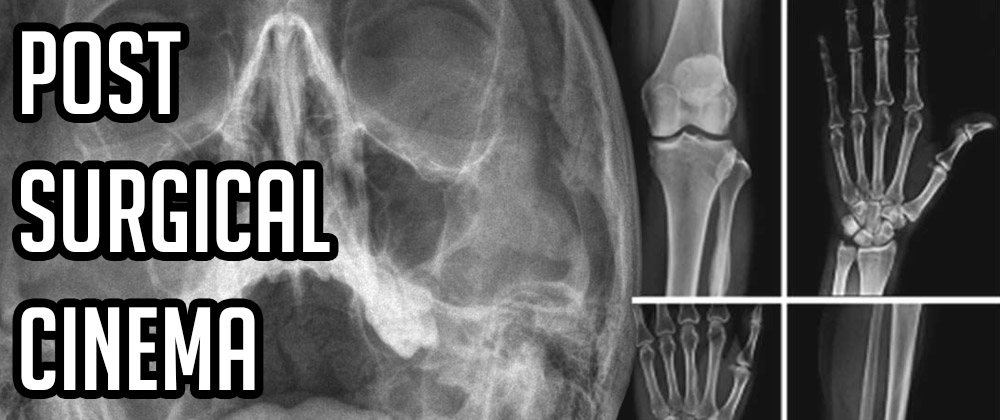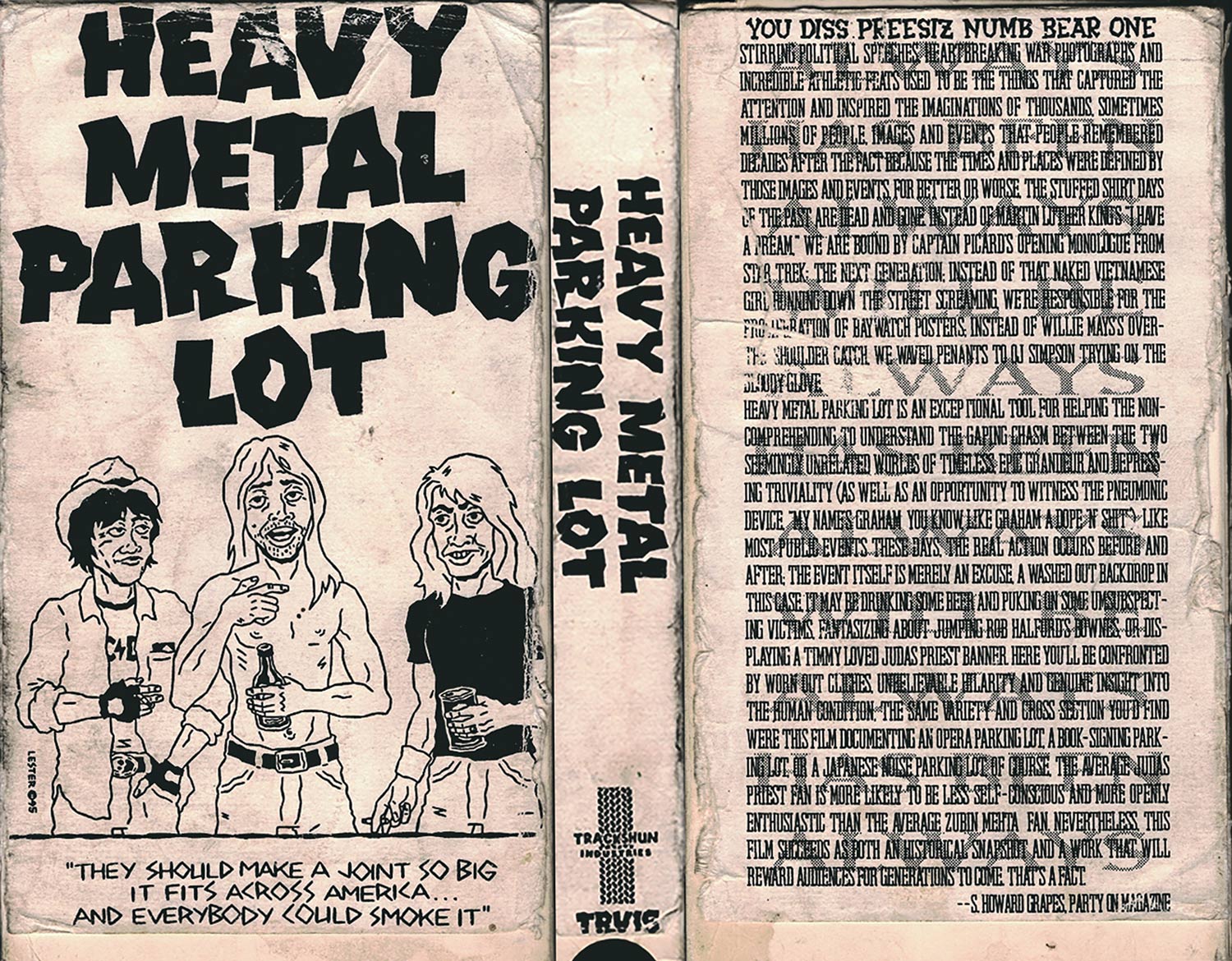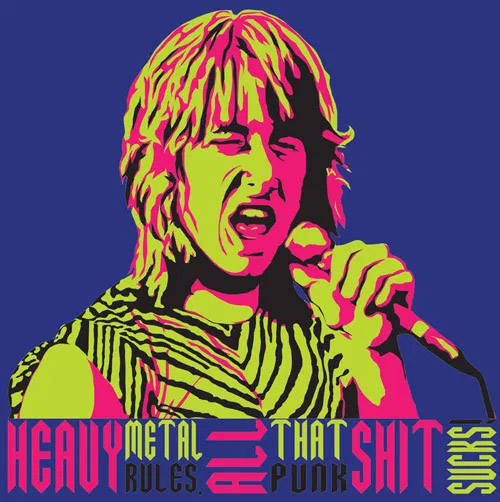 Post Surgical Cinema is a series of indefinite length, motivated by a recent accident -and corrective surgery- that will keep me off my feet for the next 6 weeks. In this series we hope to cover films and documentaries that, for whatever reason, could be interesting for our readers.
Post Surgical Cinema is a series of indefinite length, motivated by a recent accident -and corrective surgery- that will keep me off my feet for the next 6 weeks. In this series we hope to cover films and documentaries that, for whatever reason, could be interesting for our readers.
In May of 1986, two wannabe-documentarians went to the parking lot of the Capital Center in Largo, Maryland, and started interviewing some of the fans tailgating before a Judas Priest show. In Heavy Metal Parking Lot (HMPL), the end result of those interviews, we meet a curious array of fans showing their excitement about the show, and sharing some of their thoughts about music, society, and life. It’s mostly guys (though there are also a few girls), most of them white (except for a couple of black and latino fans) and quite a few of them are under the influence of something. It looks like the beginning of one hell of a party, even though many of them will probably not remember any of it.
Despite its short duration (it’s only about 17 minutes long), HMPL enjoys something of a cult status. Those featured in it (“Zebra Man”, “Graham of Dope”, and others) have become mythological creatures, eternal avatars of the heavy metal lifestyle of the 80s. Some actually call it the cult film, not thanks to its cinematic quality, but because of how memorable it is, and how its characters continue to be emulated and fetishized to this day. Starting in the late 2000s, the film became the subject of academic discussion, with many cultural, anthropological and sociological works referencing it, and it is even part of the University of Maryland’s permanent collection (in addition to having been part of an exhibit there about heavy metal). Even musicians have paid homage to the movie, with the 2019 Steel Panther album Heavy Metal Rules being named after one of the catchphrases of Zebra Man, one of the most effervescent characters in the film.

Its significance in metal culture notwithstanding, the film was made by people who, as they themselves concede, were not metal fans. What’s more, it was sheer luck that the band in question was Judas Priest, as they were going to do their parking lot project with whatever concert happened to be taking place. And yet, HMPL is very valuable for those who have an interest in the development of heavy metal culture, offering an unfiltered snapshot in a way that nobody else captured at the time. It gives us clues as to who were the people that made up the community, as well as an opportunity to compare it with what it has become. This is not to say that the film is an accurate demographic portrayal of 80’s heavy metal culture as a whole (we’re only looking at fans of Judas Priest who could afford and/or get a ticket, and make it to Maryland for the show, and come by car, and park it at that specific paid parking lot at that specific time, and were approached by the camera, and agreed to talk, and ended up in the final edit) but it is a fascinating look nonetheless.
At the same time, HMPL also has a certain sideshow feel to it, with many of the people attracted to the documentary getting a kick out of how much better they feel about themselves compared to the people in the film. In classic academic snobbery, for example, an ethnomusicologist from the University of Maryland says that film looks into a “distinctive, fascinating and kind of repelling working class culture”, while others enjoy mocking the apparent stupidity of the kids being filmed. Though I didn’t get that feeling of superiority when watching HMPL, I’ve felt similar things when watching the fantastic documentary about Insane Clown Posse‘s fans, American Juggalo, and so I can’t really pretend to have any moral high ground here. However, it does explain why so many of the people featured in the documentary were not exactly happy when they first saw themselves there: None of us wants to be the butt of every joke, and none of us would like to be judged based solely on our edgiest teenage moment, no matter how funny other people found it.

From the first few minutes of the documentary, it becomes clear that this particular crowd is largely blue collar, living in the margins of social acceptability. This is not to say that everybody in the documentary is some kind of Dickensian metalhead, but counterculture dynamics are certainly a big part of it. As one of the kids featured in HMPL said recently in an interview, heavy metal gave “a way for misfits to fit, to feel like they were a part of something bigger.” That sense of community, coupled with the rejection of mainstream mores, is a constant in the film.
Though in hindsight it might seem unbelievable (if nothing else, because of how stupid it was) the fact remains that, when the documentary was made, heavy metal was still considered a dangerous or at least controversial interest for someone to have. Let’s not forget that 1986 is only a couple of years after the PMRC hearings, and right in the middle of the satanic panic, where heavy metal music was often seen as an indicator of potential criminal satanic behavior. With those social dynamics happening in the background, it’s no surprise that drugs, alcohol, anger, and a general rejection of whatever society deemed “acceptable,” are the common thread uniting most of the people being interviewed; they’re outcasts who have found a place where they belong. This is probably why attempts at re-creating the feel of HMPL at modern shows usually miss the mark: With heavy metal no longer being controversial it’s difficult to recreate the same asocial (if not downright antisocial) atmosphere. It’s artificial; it’s people cosplaying as outcasts.
With this I’m not trying to romanticize the image of the kids portrayed in the documentary, or attribute to them some idealized working class sensitivities. On the contrary; just as it happens with any random assortment of humans, a few of them are probably great people, and the rest probably grew up to be massive assholes. But the magic of HMPL is that it gives us so little information about who these kids are, that we can just fill in the blanks with whatever makes sense to us. In my case, my mind takes me back to my first heavy metal concert ever, when I was just 14 years old. Just a few months after the death of my father, and only a few days shy of my 15th birthday, I spent about 10 hours just waiting for the doors of the arena to open. We got there early in the morning (though we were far from being the first in line), and spent all day waiting, eating pizza, and just talking with complete strangers. I was scared shitless (South American heavy metal concerts were, at the time, a much more intimidating venture) but still giddy with excitement. I was rather antisocial back then (and, to an extent, I still am), but as uncomfortable and tiring as that first concert was, I knew I was home.
I think that, in a way, this is why HMPL has resonated with so many people, way beyond those who just see it for the vicarious embarrassment. It gives metal fans an opportunity to go back to the naivete, excitement, and pathological stupidity that comes from being young and going to a metal show. Just like Santa Claus and Christmas, bands and concerts lose some of their charm as we grow older. It’s not that they get boring, or that you don’t want to go anymore (pre-pandemic I was still going to as many shows and festivals as I possibly could) but instead that they’re no longer the almost mystical experience that you felt as a kid. You have a better understanding of your place in the world, you see the band as made up of mere humans (as opposed to semi-divine characters) and feel much less committed to hanging around after the show in the hopes of getting a picture or an autograph. Basically, you grow up (and/or become what South Park calls a cynical asshole). It’s just a part of life.
Re-watching HMPL in 2020 has been different though. Instead of nostalgia for my first shows, it was nostalgia for any shows at all. It made me think about how much I still enjoy concerts, and what a big role they play in my life, both physically as well as emotionally. And yet, experts agree that concerts, at least ones resembling what concerts used to be, are still a long way away from us. And that’s without even mentioning the much more serious consequences that this pandemic will bring to all the associated industries that are part of the concert experience, such as touring crews, and venues. A massive financial catastrophe awaits us since, for the foreseeable future, millions of people dependent on the entertainment sector will be unable to work, and will struggle financially. And even though today, in my 30’s, I still believe in Zebra Man’s dictum of “HEAVY METAL RULES”, I do wonder how much of it will be left once this madness is finally over.

